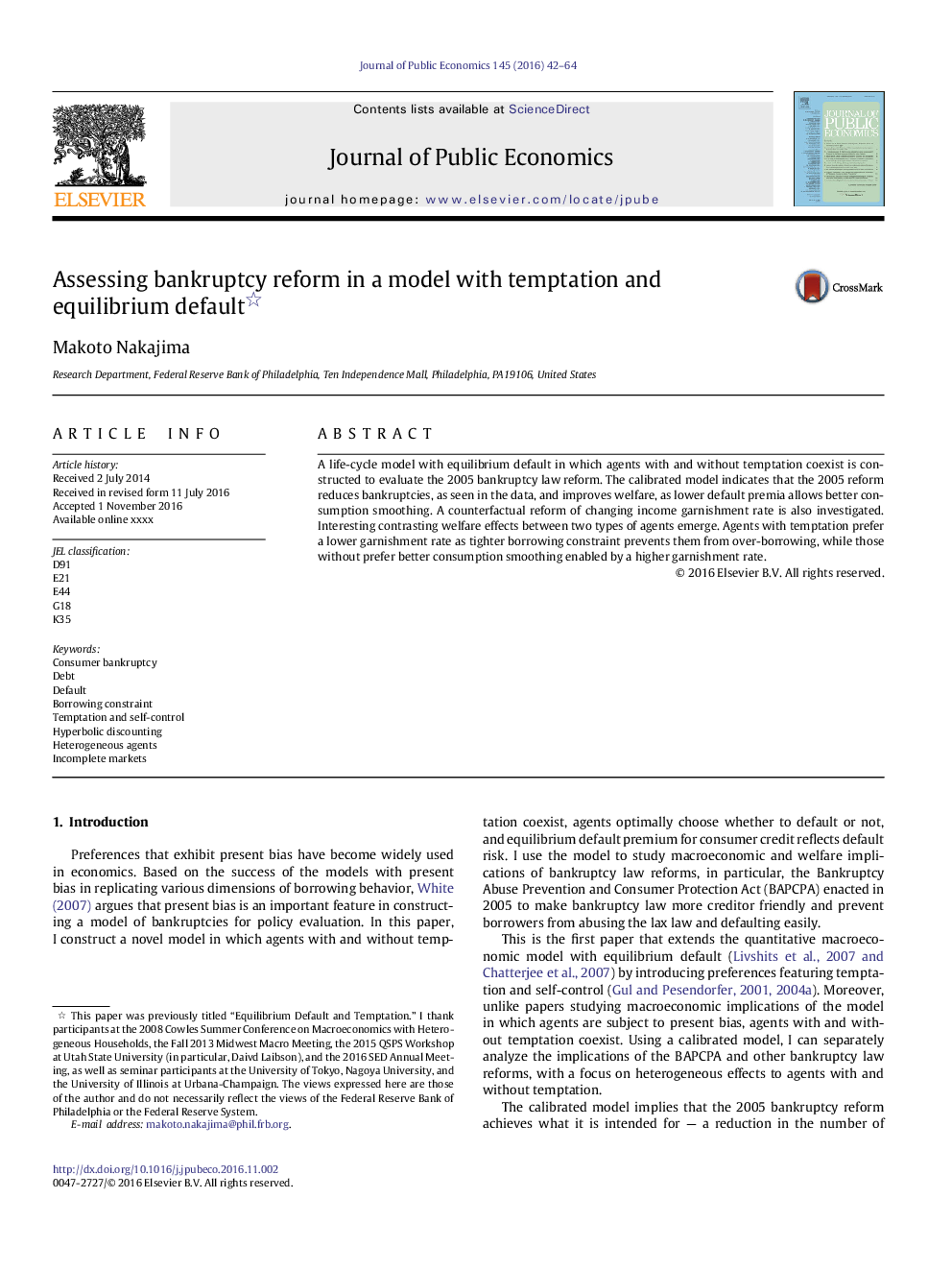| Article ID | Journal | Published Year | Pages | File Type |
|---|---|---|---|---|
| 5101825 | Journal of Public Economics | 2017 | 23 Pages |
Abstract
A life-cycle model with equilibrium default in which agents with and without temptation coexist is constructed to evaluate the 2005 bankruptcy law reform. The calibrated model indicates that the 2005 reform reduces bankruptcies, as seen in the data, and improves welfare, as lower default premia allows better consumption smoothing. A counterfactual reform of changing income garnishment rate is also investigated. Interesting contrasting welfare effects between two types of agents emerge. Agents with temptation prefer a lower garnishment rate as tighter borrowing constraint prevents them from over-borrowing, while those without prefer better consumption smoothing enabled by a higher garnishment rate.
Keywords
Related Topics
Social Sciences and Humanities
Economics, Econometrics and Finance
Economics and Econometrics
Authors
Makoto Nakajima,
